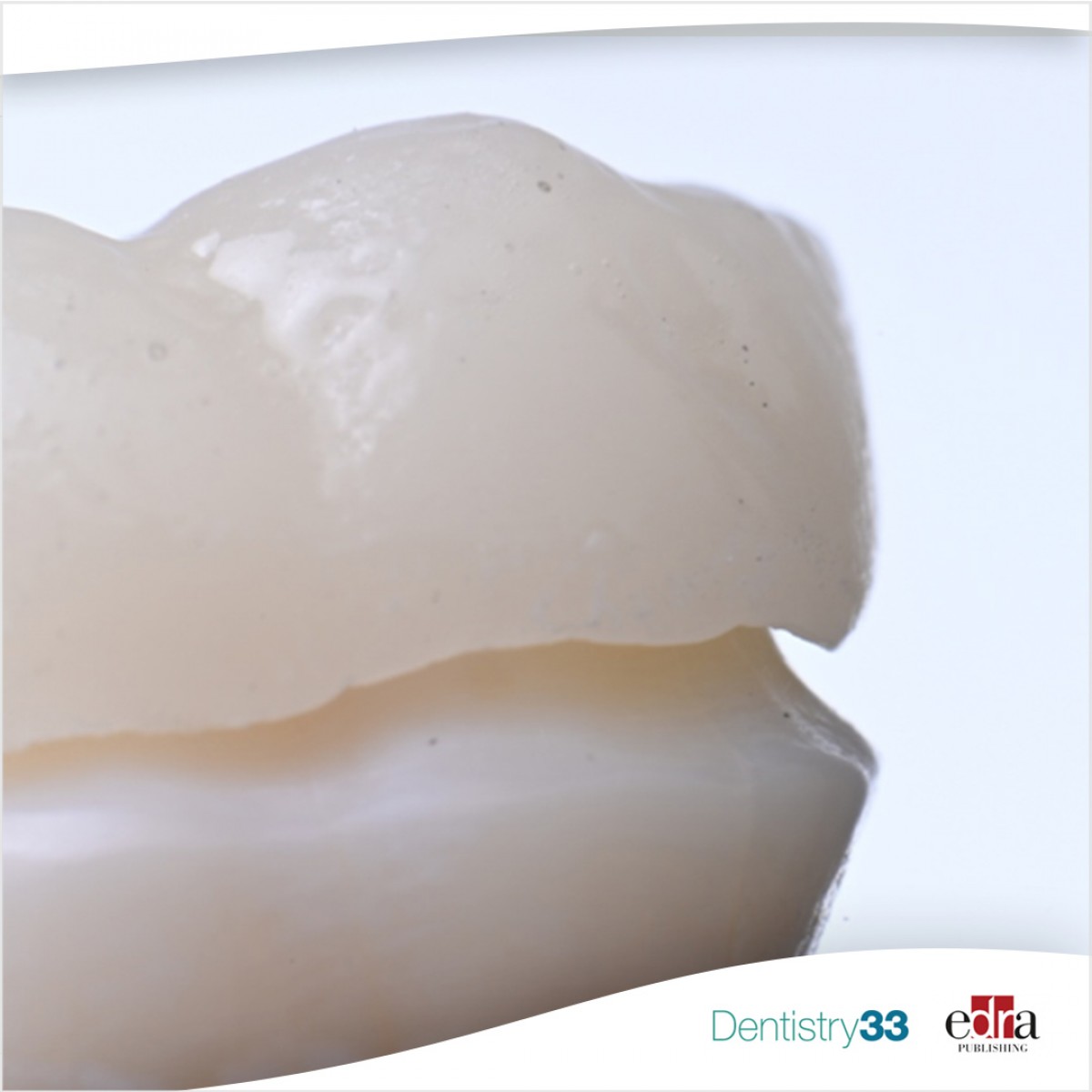
Influence of finish lines on marginal, internal adaptation of CAD-CAM cobalt-chromium metal alloy copings
Lorenzo Breschi
Introduction
A close marginal gap and accurate fit between the tooth and the restoration are important for the long-term success of fixed dental protheses. Poor marginal and internal adaptation can result in cement dissolution, microleakage and increased plaque retention, potentially leading to endodontic and periodontal disease. Moreover, the type of finishing line can influence the clinical success of a prosthetic restoration.
Although this topic is controversial and has clinical consequences, clear consensus as to which finish line design can provide a better marginal and internal adaptation with respect to cobalt-chromium metal alloy copings fabricated by using CAD-CAM technology is lacking.
A recent systematic review published by Shah et. al aims to evaluate the effect of different finish line preparations on the marginal and internal adaptation of cobalt-chromium metal alloy copings fabricated by using CAD-CAM technology.
Materials and methods
Electronic and manual searches of different databases — PubMed, Cochrane, EBSCOhost, and Google Scholar — were conducted for relevant articles published from January 2010 to December 2020. The authors identified relevant studies evaluating the effect of different finish line preparations — chamfer, deep chamfer, shoulder, rounded shoulder — on the marginal and internal adaptation of cobalt-chromium metal alloy copings fabricated by using CAD-CAM technology.
Results
Of the 573 articles obtained initially, 24 studies were selected after title, abstract and full-text screening and were included for both qualitative and quantitative analyses. The marginal adaptation was evaluated under the parameters of marginal gap, absolute marginal discrepancy, and vertical marginal discrepancy. Internal adaptation was evaluated under the parameters of internal gap, cervical discrepancy, axial discrepancy, and occlusal discrepancy. The methods of CAD-CAM fabrication — direct metal laser sintering, hard milling and soft milling — were considered under the subgroup analysis.
Conclusions
Based on the findings of this systematic review and meta-analysis, it was concluded that improved marginal and internal adaptation were observed with shoulder and rounded shoulder finish line designs when CAD-CAM methods were used for coping fabrication. Moreover, soft milling and direct metal laser sintering methods showed better overall marginal and internal adaptations in chamfer and deep chamfer finish line designs whereas hard milling showed better results with the shoulder finish line design. Thus, the clinical consequences depend on which manufacturing methods the clinician chooses to use.
Naisargi Shah, Praveen Badwaik, Vidhi H. Sheth, Vishrut Bhatnagar, Nikhil Bhanushali, and Prashant Patil. "Effect of different finish line preparations on the marginal and internal adaptation of cobalt-chromium metal alloy copings fabricated by using CAD-CAM technology: A systematic review and meta-analysis." J Prosthet Dent. 2022 May. https://doi.org/10.1016/j.prosdent.2021.06.030
 Tag
Tag
 Read more
Read more
Editorials 10 October 2025
With proud smiles and crisp white coats, ninety-three learners from the DDS Class of 2029 and the International Dentist Pathway Class of 2028 marked the start of their dental careers at the UCSF...
Periodontology 10 October 2025
Continuous professional development (CPD) in Periodontology refers to the overall framework of opportunities that facilitate a life-long learning practice, driven by the learner-practitioner and...
TheraBreath, the #1 alcohol-free mouthwash brand in the U.S.*, has introduced a new line of dentist-formulated, clinically tested toothpastes designed to support professional oral care...
News 10 October 2025
New officers and trustees were installed at the Minnesota Dental Association’s Leadership Conference on September 19 in Minneapolis.
News 10 October 2025
Smartee Denti-Technology today announced that Professor Gang Shen, its Chief Scientist and Executive President of TaiKang ByBo Dental, has once again been named to the World’s Top 2% Scientists...










